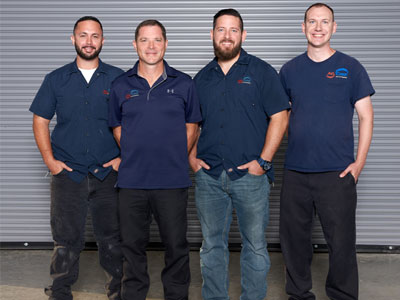Selecting a Reputable Contractor
Insurance and Liability
 When considering a HVAC contractor, ask to see documentation that they carry general liability insurance to protect your property as well as workers compensation insurance on their employees. The State of TX does not require employers to carry workers compensation insurance. Lack of adequate insurance could be a major problem for you if someone is injured on your property. An air conditioning contractor should always have these types of insurance and this will save you from a claim against your homeowner’s policy in case of an accident.
When considering a HVAC contractor, ask to see documentation that they carry general liability insurance to protect your property as well as workers compensation insurance on their employees. The State of TX does not require employers to carry workers compensation insurance. Lack of adequate insurance could be a major problem for you if someone is injured on your property. An air conditioning contractor should always have these types of insurance and this will save you from a claim against your homeowner’s policy in case of an accident.
All Cool A/C & Heating carries three times the State of Texas insurance requirements as well as workers compensation to give our customer’s peace of mind that their home is protected from any unforeseen circumstances. Our customer’s comfort and protection are at the forefront of our business.
Check License
Choosing a HVAC contractor should include checking with the TDLR. Be sure that the HVAC contractor’s license is current and check if the TDLR has a history of disciplinary actions or complaints published on their website at http://www.license.state.tx.us.
Another source for finding a competent HVAC contractor is the local permits office for your municipality. The municipal inspectors know the HVAC contractors who do good work from the HVAC contractors who do poor work.
All Cool A/C & Heating holds two Class A HVAC licenses with the State of Texas.
Check Online Reviews
It is important to know how other customers view their experience with a contractor. One of the best ways to do this is to check a company’s reviews online to see what customers are saying. Google and Facebook are great sources to get the inside scoop on a company’s service and value.
All Cool A/C & Heating has over 100 reviews with a 5 Star Rating.
Standard Procedures
Once you identify and contact several HVAC contractors set up an appointment with each of them to visit your home. During the meeting the contractor should inspect your existing air conditioner and collect a wide range of information about your home, how many windows and type, which direction they face, and R-value of the insulation. The contractor uses all of this information to calculate the heat load to verify that the existing equipment is correctly sized and proposed equipment is also correctly sized. You should receive a written estimate from each contractor. If one contractor submits a bid that is dramatically different from the other bids, ask the contractor to explain the difference.